The Kinesiology that we are referring to is the one that uses muscular testing as a form of bio feedback referred to as “Energy Kinesiology”
What is good kinesiology?
 It seems logical to define what good kinesiology is in positive terms. However, we will approach it from the opposite angle, which is to say: what is not good kinesiology!
It seems logical to define what good kinesiology is in positive terms. However, we will approach it from the opposite angle, which is to say: what is not good kinesiology!
Over the last two decades we have seen that some practices of kinesiology are not compliant with the principle of innocuousness, that is to say that they haven’t conformed to the Hippocratic ideal ”primum non nocere” first do no harm.
Good kinesiology continuously refers back to the founding laws, principles, and its rational application of these is rational
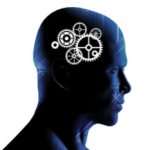 Unfortunately some practitioners lack the cultural references and knowledge of kinesiology and digress to using the muscle test in a mystical manner, in the way a dowser would use a pendulum to detect the truth, apparently capable of finding anything. This practice sometimes leads them to non-scientific/abnormal solutions and conclusions which transgress that which we know of human psychological, physiological and biomechanical functionality.
Unfortunately some practitioners lack the cultural references and knowledge of kinesiology and digress to using the muscle test in a mystical manner, in the way a dowser would use a pendulum to detect the truth, apparently capable of finding anything. This practice sometimes leads them to non-scientific/abnormal solutions and conclusions which transgress that which we know of human psychological, physiological and biomechanical functionality.
Good kinesiology doesn’t disperse the excesses but corrects the voids
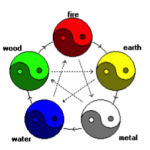 This is the law of BABA in traditional Chinese medicine. A weak or changeable test which becomes strong or stable again is not, contrary to what some believe, the sign of a good correction because it can be the result of the dispersion of an excess.
This is the law of BABA in traditional Chinese medicine. A weak or changeable test which becomes strong or stable again is not, contrary to what some believe, the sign of a good correction because it can be the result of the dispersion of an excess.
Good kinesiology doesn’t produce an imbalance in different elements of centering
 Despite a certain consensus, centering is approached by different practices.
Despite a certain consensus, centering is approached by different practices.
Centering is the cooperation of different anatomical segments between themselves. A correction in kinesiology shouldn’t, for example, disturb the walk cycle tests (GAITS), the opto-kinetic reflex, the vestibulo-occular reflex, the cloacal energies, etc…
Good kinesiology doesn’t lessen or encapsulate the emotional body
 Unfortunately some Kinesiology methods and some bio-feedback devices can create these problems which are always detrimental in the long term. This phenomenon is “naturally” found in epileptics, schizophrenics and cancer patients in the active phase of the biological conflict (Hamer’s theory).
Unfortunately some Kinesiology methods and some bio-feedback devices can create these problems which are always detrimental in the long term. This phenomenon is “naturally” found in epileptics, schizophrenics and cancer patients in the active phase of the biological conflict (Hamer’s theory).
Good Kinesiology doesn’t disintegrate reflexes
 The reflexes from young childhood (sometimes called primitives reflexes), as well as other reflexes of postural regulation that we have discovered, can be unbalanced by some kinesiologic practices. This is always harmful to the person and keeps the tonic postural system in a functionally immature state.
The reflexes from young childhood (sometimes called primitives reflexes), as well as other reflexes of postural regulation that we have discovered, can be unbalanced by some kinesiologic practices. This is always harmful to the person and keeps the tonic postural system in a functionally immature state.
Good Kinesiology doesn’t weaken the energies of chakras
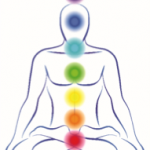 The chakras function as energy transducers which are assigned to a particular region of the anatomy. Weakening the energy of the chakras somewhat drains the person of vitality.
The chakras function as energy transducers which are assigned to a particular region of the anatomy. Weakening the energy of the chakras somewhat drains the person of vitality.
Good Kinesiology doesn’t block the emunctory organs
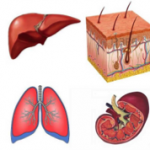 The emunctory organs like the liver, kidney, large intestine and skin can become blocked after incoherent and inappropriate corrections which result in a toxin overload. (Toxin in the naturopathic sense of the word and not in the bacteriological sense of the word.)
The emunctory organs like the liver, kidney, large intestine and skin can become blocked after incoherent and inappropriate corrections which result in a toxin overload. (Toxin in the naturopathic sense of the word and not in the bacteriological sense of the word.)
Good Kinesiology doesn’t deregulate the postural sensors (eyes, feet,
 TMJ (temporo-mandibular joint), occlusion, proprioception…)
TMJ (temporo-mandibular joint), occlusion, proprioception…)
This would destabilise the tonic postural system and accelerate the occurence of some disorders linked to postural deficit syndrome.
Good Kinesiology doesn’t create displacement or compensation
This is not exclusive to bad kinesiology techniques as this phenomenon can also be found after certain inappropriate techniques in chiropractic or osteotherapy.
Good Kinesiology doesn’t create suppression
We use the term suppression in the homeopathic sense of the term, that is to say, that sometimes certain stress responses cannot be detected by muscle testing but are found buried deep inside the body and these reappear years after in the form of organic or psychosomatic illnesses. We can also observe this phenomenon after treatments using bio-feedback devices which use « phase opposition » electromagnetic correction.
Good Kinesiology doesn’t alter the mobility of the fascia
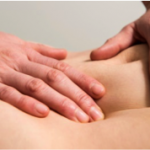 The imbalances in the fascia greatly alter the dynamic posture and well-being of the person.
The imbalances in the fascia greatly alter the dynamic posture and well-being of the person.
Good Kinesiology must positively inform or re-inform the person to allow the person to create mental connections and make sense of the information
Unfortunately, overconfidence in the mental or verbal tests sometimes creates false-positives, making things which are symbolic or imaginary seem real, which could lead to false corrections and thus cause psychological imbalances.
Good Kinesiology doesn’t hold the person in the past
 Since we use age recession techniques, the practitioner must ensure that at the end of the session the person being tested has returned 100% to the present time at the conscious, subconscious and body levels.
Since we use age recession techniques, the practitioner must ensure that at the end of the session the person being tested has returned 100% to the present time at the conscious, subconscious and body levels.
Those that don’t do this correctly, relying only on blind faith in the verbal test, (which is always dependent on the operator), could do the following test: the tester holds a neutral touch simultaneously on the right and left acupuncture points 1 V (internal canthus of the eye). This produces a change in the indicator muscle when the person is not in the present time.
Good Kinesiology must not put the person into excess of sympathetic activity
Generally, the majority of kinesiology techniques reduce the excesses of activity in the orthosympathetic system and rarely correct underactivity in the parasympathetic system. It is completely abnormal to see a person who had a relatively well-balanced autonomic/vegetative nervous system put into excess of sympathetic activity after a few sessions of kinesiology.
Good Kinesiology must not break down the different step of walking process
 The different steps of walking cannot be summed up by crawling and walking on four legs. Some kinesiology techniques break down one or several of these 17 steps which have a “modelling” purpose in the brain and which integrate the motor patterns of walking.
The different steps of walking cannot be summed up by crawling and walking on four legs. Some kinesiology techniques break down one or several of these 17 steps which have a “modelling” purpose in the brain and which integrate the motor patterns of walking.
Obviously there are many other disorders resulting from bad practices in kinesiology. We have simply listed the most frequent ones that we have encountered in our own clients.
During our training courses, we teach a very broad curriculum (anatomy, physiology, biomechanics, posturology, psychology, therapeutic relationships etc…)
Our observation: It is above all a lack of background knowledge, and a transgression of the Hippocratic principle of innocuousness “primum non nocere”, “first, do no harm”, that deeply harms our profession. It is rarely a bad relationship with a client.
